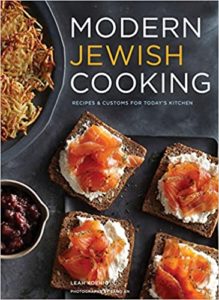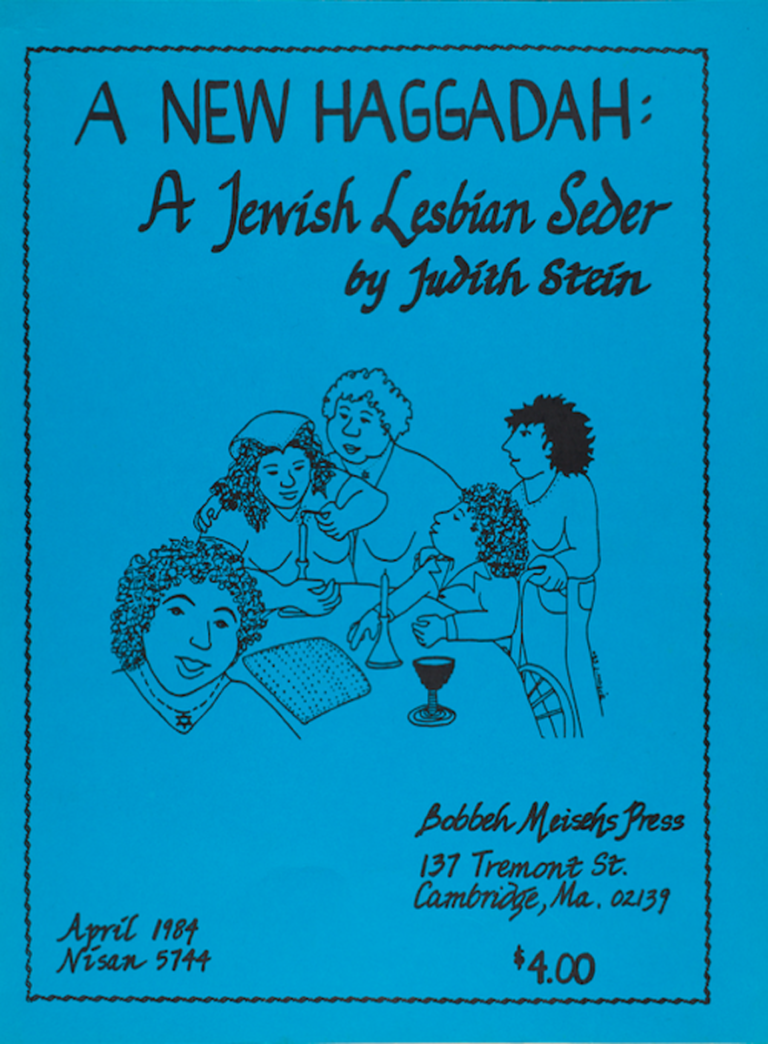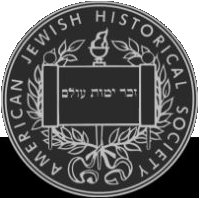Jewish foodways, and the magic of dessert

Post originally written for National Dessert Day, 2022.
We sat down for a short interview with Jewish cookbook writer Leah Koenig to ask her some dishy questions about the past and future of Jewish desserts. Here is what she had to say!
AJHS: What is your favorite (or top 3 favorites if you can’t choose) dessert recipe in Modern Jewish Cooking, and why? Is it connected to a beloved family recipe, a special moment, or is it just really good?
Koenig: The chocolate almond hazelnut horns, without question. I didn’t grow up eating almond horns, which are a crescent moon-shaped pastry made from almond paste (and sometimes partly dipped in chocolate) that were once a fixture of Jewish bakeries in New York City. But as soon as I tried them, I was hooked. My affection for the rugelach and mandelbrot of my youth will never fade, but there’s something about almond horns’ crunchy outside, chewy inside, and sweet, almond-y flavor that makes them irresistible. For my recipe in Modern Jewish Cooking, I swapped out the sliced almonds that the almond horns typically are rolled in for hazelnuts, and love the extra bit of nuttiness they offer. But they are perfect either way.

AJHS: What is one type of dessert you think all Americans, Jewish or otherwise, need to try?
Koenig: My next book, which will be out next fall, is focused on Rome’s historic Jewish community and its beguiling cuisine. In Rome’s Jewish ghetto neighborhood, there’s a 200-year old kosher bakery called Pasticceria il Boccione that makes something called pizza Ebraica (literally “Jewish-style pizza”). There’s no cheese or sauce involved, however; pizza Ebraica are these crisp-chewy bar cookies studded with almonds, pine nuts, raisins, and candied fruit. Tourists and locals alike line up outside of Boccione everyday to try pizza Ebraica, and they are not only delicious but truly unlike anything else I’ve tried. They were also, rather famously, Pope John Paul II’s favorite cookie in Rome–the women who run Boccione keep a letter that he wrote them framed on the bakery wall.
AJHS: What changes can you see happening in the landscape of Jewish baking and desserts in the next couple of decades?
Koenig: There’s already a big fusion trend in motion, with people mashing up Jewish pastries and desserts with flavors and ingredients from other parts of Jewish cuisine or other cuisines. Think: hamantaschen filled with dulce de leche instead of ground poppy seeds or jam, or funfetti babka. I think that will continue and I’m all for it in theory, as long as bakers don’t stray so far from tradition that it becomes unrecognizable and loses touch with its roots.
AJHS: What Jewish culture are you most inspired by in your dessert recipes?
Koenig: When it comes to flavor and freshness, I tend to gravitate towards Sephardi and Middle Eastern Jewish recipes in my cooking – but for baking and desserts, my heart belongs to Ashkenazi cuisine. I particularly love the wide variety of German kuchen, like apple cake, streusel-topped coffee cakes, plum cake etc. They are decadent, but also so comforting and homey.








